Themed collection 20th Anniversary of Aggregation-Induced Emission

Celebration of the 20th anniversary of aggregation-induced emission with research highlights from Royal Society of Chemistry journals
Fengyan Song, Bin Liu and Ben Zhong Tang introduce the celebration of the 20th anniversary of aggregation-induced emission with research highlights from Royal Society of Chemistry journals.
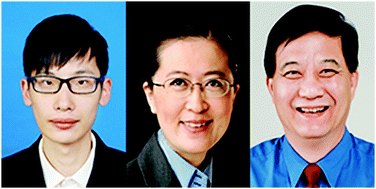
J. Mater. Chem. C, 2020,8, 7972-7974
https://doi.org/10.1039/D0TC90119A
Metal free room temperature phosphorescence from molecular self-interactions in the solid state
Purely organic materials showing solid state room temperature phosphorescence (RTP) are receiving an ever growing interest due to their low toxicity, cost and environmental load compared to their organometallic counterparts.
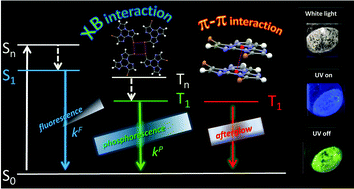
J. Mater. Chem. C, 2018,6, 4603-4626
https://doi.org/10.1039/C8TC01007B
A self-delivery DNA nanoprobe for reliable microRNA imaging in live cells by aggregation induced red-shift-emission
A Y-shape and pyrene-modified DNA self-assembly is developed to sensitively and specifically detect microRNA through a pyrene excimer–monomer switch.
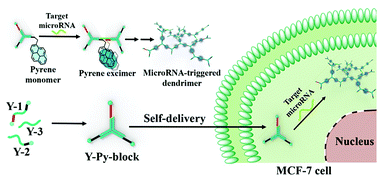
Chem. Commun., 2020,56, 1501-1504
https://doi.org/10.1039/C9CC08093G
AIE-active micelles formed by self-assembly of an amphiphilic platinum complex possessing isoxazole moieties
We report a luminescent micelle that is prepared through the self-assembly of an amphiphilic, neutral Pt(II) complex with isoxazole moieties in THF/water on account of its aggregation-induced emission (AIE) property.

Chem. Commun., 2020,56, 1137-1140
https://doi.org/10.1039/C9CC07819C
Surface-grafted polyacrylonitrile brushes with aggregation-induced emission properties
Polyacrylonitrile (PAN) brushes were grafted from silicon wafers by photoinduced ATRP and shown to exhibit aggregation-induced emission (AIE) properties.
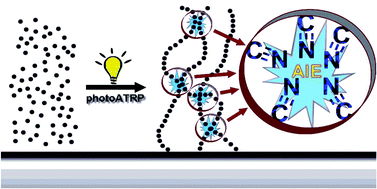
Polym. Chem., 2020,11, 669-674
https://doi.org/10.1039/C9PY01213C
Identifying glioblastoma margins using dual-targeted organic nanoparticles for efficient in vivo fluorescence image-guided photothermal therapy
Dual-targeted organic nanoparticles efficiently target the margin of glioblastoma and successfully suppress the tumour growth through photothermal therapy.
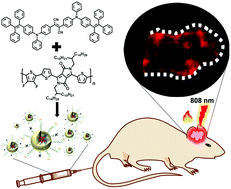
Mater. Horiz., 2019,6, 311-317
https://doi.org/10.1039/C8MH00946E
Rational design of substituted maleimide dyes with tunable fluorescence and solvafluorochromism
We herein present a simple methodology to systematically expand the scope of maleimide-based dyes and also provide an insight into the relationship between substitution pattern and optical properties.
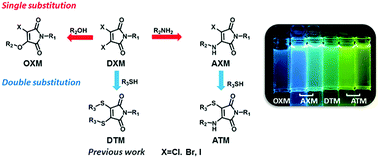
Chem. Commun., 2018,54, 3339-3342
https://doi.org/10.1039/C8CC00772A
A cyanine-based fluorescent cassette with aggregation-induced emission for sensitive detection of pH changes in live cells
A novel fluorescent cassette consisting of a TPE donor and a cyanine acceptor was developed for sensitive detection of pH changes in live cells.
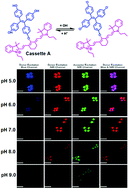
Chem. Commun., 2018,54, 1133-1136
https://doi.org/10.1039/C7CC08986D
Aggregation-induced emission in precursors to porous molecular crystals
Trigonal fluorinated pyrazoles assemble into porous molecular crystals and show solid-state fluorescence. However, their emission behavior in solution is dramatically different.
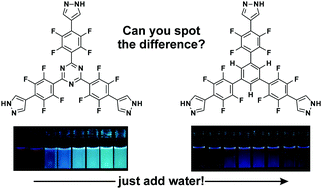
Chem. Commun., 2017,53, 10022-10025
https://doi.org/10.1039/C7CC03814C
Diarylboryl-phenothiazine based multifunctional molecular siblings
Molecular siblings 1 and 2 are constructed from triarylboron and phenothiazine moieties and showed multifunctional characteristics such as AIE, mechanofluorochromism, triboluminescence and temperature sensing.
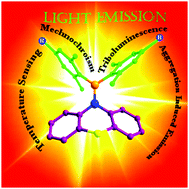
Chem. Commun., 2017,53, 3641-3644
https://doi.org/10.1039/C6CC09717K
A stable tetraphenylethene derivative: aggregation-induced emission, different crystalline polymorphs, and totally different mechanoluminescence properties
Two crystalline polymorphs of TMPE (Cp-form and Cc-form) exhibit totally different mechanoluminescence properties.
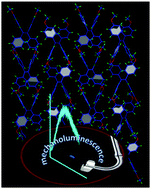
Mater. Horiz., 2016,3, 220-225
https://doi.org/10.1039/C6MH00025H
Integration of aggregation-induced emission and delayed fluorescence into electronic donor–acceptor conjugates
Aggregation-induced emission and delayed fluorescence are observed simultaneously for the luminogens with an electron-donor and acceptor framework.

J. Mater. Chem. C, 2016,4, 3705-3708
https://doi.org/10.1039/C5TC03588K
A light-up probe with aggregation-induced emission characteristics (AIE) for selective imaging, naked-eye detection and photodynamic killing of Gram-positive bacteria
We report a multifunctional light-up probe based on AIEgens for selective recognition, naked-eye identification, and photodynamic killing of Gram-positive bacteria including vancomycin-resistant strains.
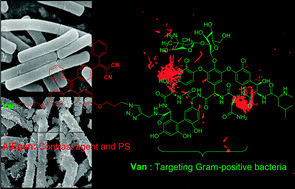
Chem. Commun., 2015,51, 12490-12493
https://doi.org/10.1039/C5CC03807C
Direct evidence to support the restriction of intramolecular rotation hypothesis for the mechanism of aggregation-induced emission: temperature resolved terahertz spectra of tetraphenylethene
THz-TDS and computational modelling reveal temperature dependent structural changes that correlate with fluorescence.
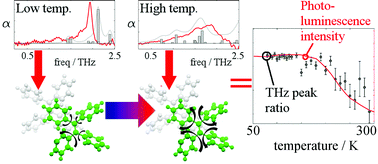
Mater. Horiz., 2014,1, 251-258
https://doi.org/10.1039/C3MH00078H
Lighting up thiolated Au@Ag nanoclusters via aggregation-induced emission
A simple synthesis strategy for highly luminescent thiolated Au@Ag nanoclusters with aggregation-induced emission was developed.
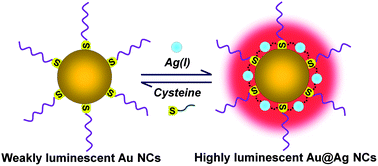
Nanoscale, 2014,6, 157-161
https://doi.org/10.1039/C3NR04490D
A conical intersection model to explain aggregation induced emission in diphenyl dibenzofulvene
Aggregation induced emission in diphenyl dibenzofulvene occurs because access to a conical intersection seam is blocked in the solid state.
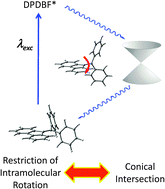
Chem. Commun., 2013,49, 5966-5968
https://doi.org/10.1039/C3CC41730A
Aggregation-induced emission of 1-methyl-1,2,3,4,5-pentaphenylsilole
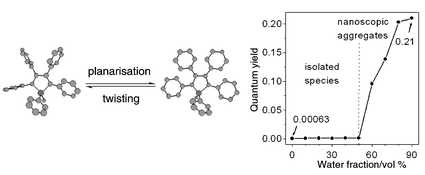
Chem. Commun., 2001, 1740-1741
https://doi.org/10.1039/B105159H
The butterfly effect in bisfluorenylidene-based dihydroacenes: aggregation induced emission and spin switching
Difluorenylidene dihydroanthracene with a butterfly-like structure exhibits both aggregation induced emission (AIE) and thermally activated ground-state spin switching properties.
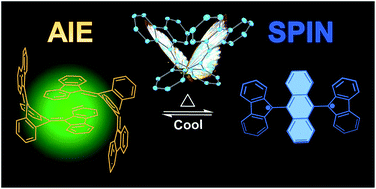
Chem. Sci., 2019,10, 10733-10739
https://doi.org/10.1039/C9SC04096J
Molecular design of near-infrared fluorescent Pdots for tumor targeting: aggregation-induced emission versus anti-aggregation-caused quenching
This article presents the first work to fundamentally study the effect of steric hindrance in Pdot systems.
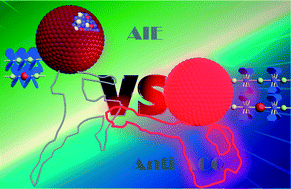
Chem. Sci., 2019,10, 198-207
https://doi.org/10.1039/C8SC03510E
Chiral molecular face-rotating sandwich structures constructed through restricting the phenyl flipping of tetraphenylethylene
Complex arrangements of tetraphenylethylene motifs resulted in a variety of chiralities of face-rotating sandwich structures (FRSs).
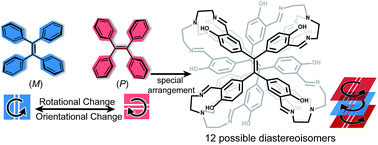
Chem. Sci., 2018,9, 8814-8818
https://doi.org/10.1039/C8SC03404D
Structure and formation of highly luminescent protein-stabilized gold clusters
Findings on the structure and formation of luminescent protein-stabilized gold clusters reveal interlocked gold-thiolate rings and a unique bio-assembled pathway.
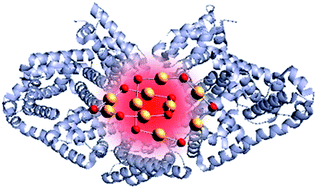
Chem. Sci., 2018,9, 2782-2790
https://doi.org/10.1039/C7SC05086K
AIE-active theranostic system: selective staining and killing of cancer cells
A mitochondrion-specific AIEgen is a theranostic molecule, with the function of lighting up and killing cancer cells rather than normal cells.
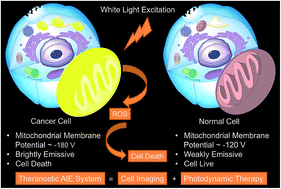
Chem. Sci., 2017,8, 1822-1830
https://doi.org/10.1039/C6SC04947H
Tuning the singlet-triplet energy gap: a unique approach to efficient photosensitizers with aggregation-induced emission (AIE) characteristics
The efficiency of the intersystem crossing process can be improved by reducing the energy gap between the singlet and triplet excited states (ΔEST), which offers the opportunity to improve the yield of the triplet excited state.
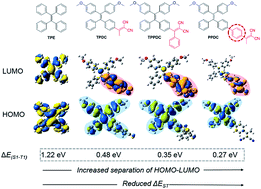
Chem. Sci., 2015,6, 5824-5830
https://doi.org/10.1039/C5SC01733E
Aggregation-induced emission enhancement of a meso-trifluoromethyl BODIPY via J-aggregation
A CF3-BODIPY forms strongly luminescent aggregates, which contrasts with the quenched condensed-phase photophysics that are typical for BODIPY dyes. Examination of the luminescent properties of these aggregates – narrow red-shifted absorption and emission bands, minimal Stokes shift and increased fluorescence rate constants – and of the solid-state packing of the dye establish the CF3-BODIPY as the first structurally characterized genuine BODIPY J-aggregate.
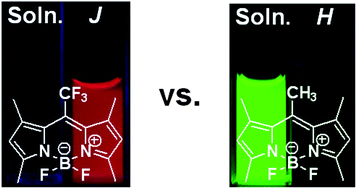
Chem. Sci., 2014,5, 751-755
https://doi.org/10.1039/C3SC52495G
What makes efficient circularly polarised luminescence in the condensed phase: aggregation-induced circular dichroism and light emission
A newly designed molecular system shows high CPL performance in the aggregate state: high emission efficiency, large dissymmetry factor, and good spectral stability.
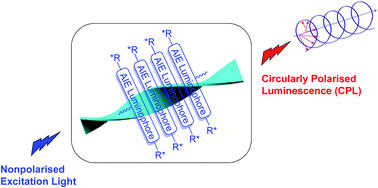
Chem. Sci., 2012,3, 2737-2747
https://doi.org/10.1039/C2SC20382K
Aggregation induced emission of a new naphthyridine-ethynyl–gold(I) complex as a potential tool for sensing guanosine nucleotides in aqueous media
A new organometallic alkynyl–gold(I) complex exhibiting aggregation induced emission is capable of sensing Guanosine nucleotides via complementary hydrogen bonding in aqueous media.

Dalton Trans., 2020,49, 171-178
https://doi.org/10.1039/C9DT04162A
Polarized resonance synchronous spectroscopy as a powerful tool for studying the kinetics and optical properties of aggregation-induced emission
Light scattering and absorption both contribute to the UV-vis extinction quantified with a UV-vis spectrophotometer, but they differ drastically in their causes and effects.

J. Mater. Chem. C, 2019,7, 12086-12094
https://doi.org/10.1039/C9TC04106K
Strategic modification of ligands for remarkable piezochromic luminescence (PCL) based on a neutral Ir(III) phosphor
A neutral Ir(III) complex has been synthesized by introducing a carboxyl group and fluorine substituents into the ligands to construct a new piezochromic luminescence (PCL) active material.
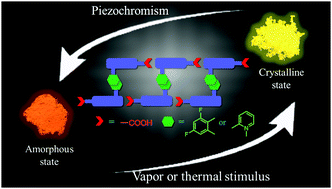
J. Mater. Chem. C, 2019,7, 10876-10880
https://doi.org/10.1039/C9TC03646F
Polymorphism of derivatives of tert-butyl substituted acridan and perfluorobiphenyl as sky-blue OLED emitters exhibiting aggregation induced thermally activated delayed fluorescence
Blue multi-functional emitters with a perfluorobiphenyl moiety exhibiting polymorphism and changing emission colour.
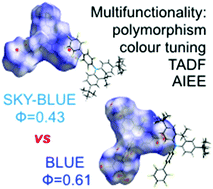
J. Mater. Chem. C, 2018,6, 13179-13189
https://doi.org/10.1039/C8TC04867C
A fluorescent turn-on probe for cyanide anion detection based on an AIE active cobalt(II) complex
A Co(II) complex based on an AIE-active tetraarylethylene ligand displays selective fluorescence enhancement in the presence of cyanide anion in aqueous solution.

Dalton Trans., 2018,47, 2079-2085
https://doi.org/10.1039/C7DT04242F
Highly emissive poly(maleic anhydride-alt-vinyl pyrrolidone) with molecular weight-dependent and excitation-dependent fluorescence
Nonconventional poly(maleic anhydride-alt-vinyl pyrrolidone) copolymers exhibit distinct AIE characteristics, as well as molecular weight-dependent and excitation-dependent fluorescence. They can emit blue to red colours under different excitation wavelengths.
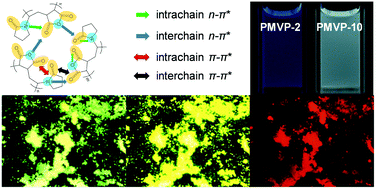
J. Mater. Chem. C, 2017,5, 8082-8090
https://doi.org/10.1039/C7TC02381B
Molecular origin of photoluminescence of carbon dots: aggregation-induced orange-red emission
The molecular origin of the photoluminescence of carbon dots (CDs) is shown.

Phys. Chem. Chem. Phys., 2016,18, 28274-28280
https://doi.org/10.1039/C6CP05321A
The effect of regioisomerism on the solid-state fluorescence of bis(piperidyl)anthracenes: structurally simple but bright AIE luminogens
Bis(piperidyl)anthracenes were developed as structurally simple, bright and colour tuneable AIE luminogens and their emission mechanisms were analysed.
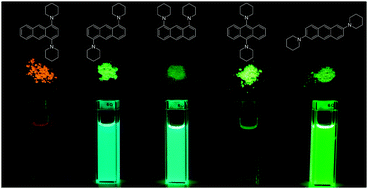
J. Mater. Chem. C, 2015,3, 5940-5950
https://doi.org/10.1039/C5TC00946D
Dual-emission fluorescent sensor based on AIE organic nanoparticles and Au nanoclusters for the detection of mercury and melamine
A dual-emission ratiometric fluorescent sensor based on AIE organic nanoparticles and Au NCs was prepared by electrostatic interaction. The probe can detect Hg2+ and melamine not only visually but quantitatively.
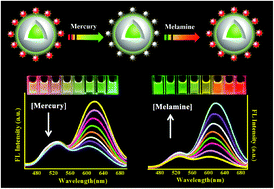
Nanoscale, 2015,7, 8457-8465
https://doi.org/10.1039/C5NR00554J
Mechanochromic luminescence of halide-substituted difluoroboron β-diketonate dyes
Halide-substituted difluoroboron β-diketonates were synthesized and display mechanochromic luminescence and quenching. Material structure is halide dependent and dynamic recovery properties for halide dyes are slower than for the hydrogen counterpart.
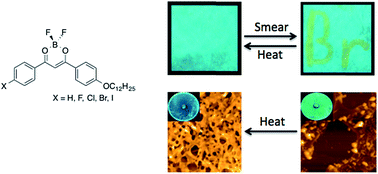
J. Mater. Chem. C, 2015,3, 352-363
https://doi.org/10.1039/C4TC02268H
A persulfurated benzene molecule exhibits outstanding phosphorescence in rigid environments: from computational study to organic nanocrystals and OLED applications
The hexathio-benzene core molecule (right) shows outstanding phosphorescence as a powder (left) and has been used for luminescent organic nanocrystals and OLED.
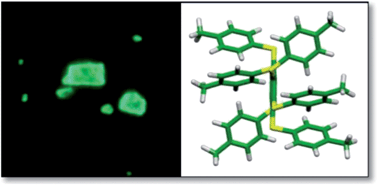
J. Mater. Chem. C, 2013,1, 2717-2724
https://doi.org/10.1039/C3TC00878A
Regulation of circular dichroism behavior and construction of tunable solid-state circularly polarized luminescence based on BINOL derivatives
Circular dichroism behavior was regulated by controlling the molecular conformation of BINOL derivatives, and tunable solid-state circularly polarized luminescence was achieved.
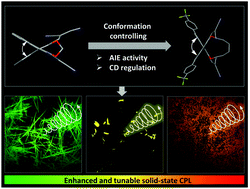
Mater. Chem. Front., 2019,3, 1613-1618
https://doi.org/10.1039/C9QM00292H
An o-phthalimide-based multistimuli-responsive aggregation-induced emission (AIE) system
An o-phthalimide-based AIE system was developed and used for detecting UV light, Hg(II) and pH, and as a photo-printing material.

Mater. Chem. Front., 2019,3, 50-56
https://doi.org/10.1039/C8QM00454D
Aggregation-induced emission-mediated spectral downconversion in luminescent solar concentrators
Two dyes showing aggregation induced emission behaviour were examined for use as a light harvesting Förster resonance energy transfer pair in luminescent solar concentrators.
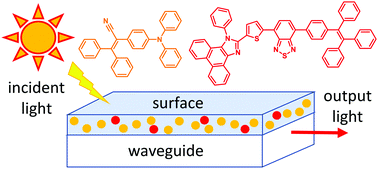
Mater. Chem. Front., 2018,2, 615-619
https://doi.org/10.1039/C7QM00598A
Control of aggregation-induced emission versus fluorescence aggregation-caused quenching by bond existence at a single site in boron pyridinoiminate complexes
The control of luminescence properties between fluorescence aggregation-caused quenching and aggregation-induced emission with or without a chemical bond at a single site in boron complexes was accomplished.
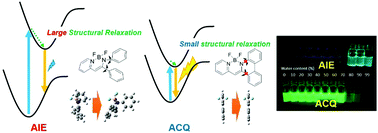
Mater. Chem. Front., 2017,1, 1573-1579
https://doi.org/10.1039/C7QM00076F
Substituent effects on the aggregation-induced emission and two-photon absorption properties of triphenylamine–dibenzo[a,c]phenazine adducts
Non-substituted and alkyl-substituted triphenylamine–dibenzo[a,c]phenazine adducts (Q1–Q3) showed the combined features of ICT plus AEE, while the alkoxy-substituted Q4–Q5 exhibited obvious AIE effects.
![Graphical abstract: Substituent effects on the aggregation-induced emission and two-photon absorption properties of triphenylamine–dibenzo[a,c]phenazine adducts](/en/Image/Get?imageInfo.ImageType=GA&imageInfo.ImageIdentifier.ManuscriptID=C7QM00024C&imageInfo.ImageIdentifier.Year=2017)
Mater. Chem. Front., 2017,1, 1396-1405
https://doi.org/10.1039/C7QM00024C
Stimuli responsive furan and thiophene substituted difluoroboron β-diketonate materials
Changing the heteroatom from oxygen to sulfur in a luminescent difluoroboron β-diketonate converts a thermally responsive material into a mechano responsive dye system.

Mater. Chem. Front., 2017,1, 158-166
https://doi.org/10.1039/C6QM00008H
About this collection
Guest Edited by Fengyan Song, Bin Liu and Ben Zhong Tang, this virtual issue features a collection of the AIE papers published in a variety of RSC journals over the past 20 years involving working mechanisms of AIE, new AIE systems, and the exploration of their optical, electronic, magnetic, chemical, energy and biomedical applications. We hope this collection will attract a broad range of audiences to the area of AIE research.